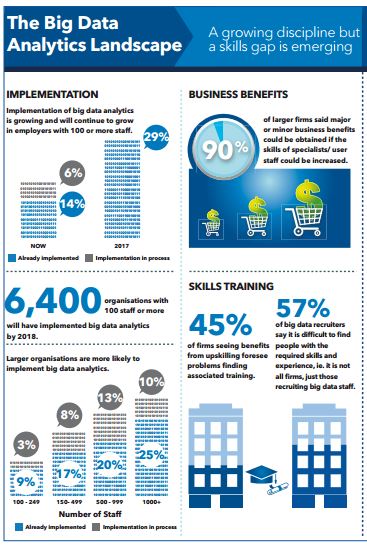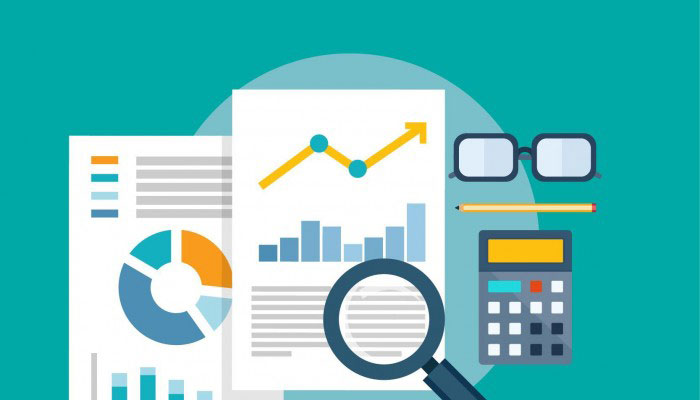Five of your top performing employees, who manage the highest grossing accounts, are quitting the job; in quick succession. Your clients are upset and intend on taking their business elsewhere, which means serious losses to your company.
Why did the employees leave? The ex-employees felt like they did not receive enough appreciation for their hard work and couldn’t get along with their manager. So your biggest competitor gave them a better offer and your employees put in their papers.
As an HR professional, you had no clue about the discontent in your team – as the issue was never strongly taken up before.
But what if you did know of it, early on? What if you had the superpower (an analytics solution) to sieve through massive volumes of appraisal data to track the problem areas in the team and solve them before it was too late?
Or what if you had enough data about the ‘bad manager’ to never have even considered hiring him in the first place?
Big data analytics in Human Capital Management makes this, and so much more, possible.
Data-Driven Decisions are the Need of the Hour in HR
Businesses spend over 50-60% of their total revenues on payroll which makes people one of the most important and expensive resources, at your organisation.
Your employees need to be given the right roles to match their experience, the right training to help them grow and the right incentives to stay on with your company. This is apart from ensuring that your company has the optimum numbers and quality of talent to help it grow.
Every day, so many business decisions are taken on the basis of solid facts and data trend analysis. But more often than not managers take HR decisions, which can make or break employee engagement with your company, by relying on gut-instinct; without using employee-led data. Research by SHL Talent Analytics TM suggests that only 44% HR professionals use objective data regarding employees’ performance to guide business decisions.
The end result – gross mismanagement of company funds owing to wrong hires, poor workforce management, over-spending of HR efforts, or high attrition of disgruntled employees.
This is where the need for business intelligence/big data analysis/talent analytics, kicks in. It helps in pinpointing the correlation between engagement and performance, retention/attrition & growth of people in an organization.
So what can Big Data Analytics do for your Company?

Big data analytics can help collate and review data, on your firm’s existing and prospective employees, in order to optimize spends – by answering the following questions:
- – What is the amount of money being spent on talent, and can it be put to better use?
- – What are the problems in HR that you foresee in the future? And how can you start preparing for it to ensure that the company doesn’t lose out?
This way, your company can process big data elements to derive information, which can help make the following processes lean and efficient:
- Compensation planning – Businesses may use big data analytics to enhance their understanding of the need for specific training lessons, to ensure employees have interest in attending and applying the sessions, and provide compensation packages towards engaging employees suitably at your organisation.
- Recruitment process – A survey finding highlights – 27% of employers believe that a single bad hire could cost them over $50,000.
Analytics can help companies figure out the best hires, who can fit in with your company’s unique culture. This will make redundant disenchantment and lowered productivity within teams, caused by wrong hires.Big data analytics can also help predict when the company needs more hands on board, based on previous year’s data, and thus recruit accordingly. - Workforce planning – Organizations that use workforce analytics are able to engage their workforce best and they thrive in tough conditions.The HR team can get a more accurate picture of productivity or loyalty patterns by analyzing big data to eventually come up with a model for employee retention or increase in productivity.In 2009, Google sieved through tonnes of employee data to narrow down on “Eight Habits of Highly Effective Managers”. The company then was able to include these traits their company’s employee training programmes, which led to “statistically significant improvement in manager quality for 75 per cent of the worst-performing managers”.This means happier employees, greater productivity and therefore more money for the company!
Here is how you can run HR analytics
If you are a smaller company, it is possible to manage the data analytics on spread-sheets.
But analysis of HR data is a mammoth task for medium enterprises and multinationals.
Big data refers to the sheer volume of employee data and applicant data that your company’s HR team needs to collate and analyse. Here is a quick cheat-sheet to make sense of this data:
- The first step is to ask the right questions. Identify the key indicators, for HR personnel to be able to ask the right questions and extract better insights on fixing organisational problems:
- Time spent on each new hire
- Cost of each new hire
- Factors of employee retention
- Details of completed employee training
- Levels of employee productivity
- Levels of employee diversity
- Degree of competitive compensation
- Degree of competitive benefits
- Crystallize on the central problem that your company is facing
- Get on board the brightest talent (data scientists with requisite training) and best tools in data analytics. You need to be able to aggregate right data and analyse its meaning
- Zero in on the metrics that are most relevant to your business. This will help narrow down the data to be collected and help you sieve through relevant data.
- Analyze data to draw inferences
- Present statistical findings to stakeholders in a visual format (graphs and infographs)
- Outline a step-by-step process to solve the issue at hand, based on the data analysis
Challenges to Overcome in Adoption of Big Data

- There is an over-load of employee data that HR professionals face. It includes employee data from social media, performance reviews, attendance and time tracking, hiring, training and so much more.
- There is a dearth of trained data scientists to plough through the large volumes of data and make sense of it. A research foresees the need for 243% more data specialists by 2017.
- There is still not enough awareness about the benefits that data analytics offer in the HR space, therefore their budget for such an investment also has its limits
- Lack of compatibility of data analysis across geographies can result in costly omissions or overlaps in data

Even if a company saves only a few percentage points in terms of payroll, it still means a considerable amount of savings – which can amount to all the difference between success and failure.
The war to better understand and utilize big data in HR is on, as companies are gradually adopting this strategy, globally.
So HR professionals and the company’s top management may ignore this trend, at their own risk.




My brother’s company has grown to over 500 employees and he wants to gain more data in his HR department. I didn’t know that 27% of employers believe that a single bad hire could cost up to $50,000 and how analytics can help to find the best fit. I will let my brother know about the advantages of HR analytics and how that can provide him with more data .